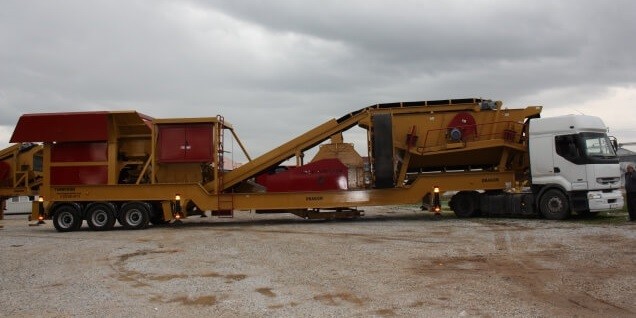A crusher plant is a facility designed to process large rocks, ores, or construction waste into aggregates (sand, gravel, crushed stone) through crushing, screening, and classification. These systems, which can be stationary or mobile, are fundamental in raw material preparation for construction, mining, and recycling industries.
Purpose:
Crushing: Reduces large materials to desired sizes using jaw, cone, or impact crushers.
Screening: Separates crushed materials by size via vibrating screens (e.g., 0-5 mm sand, 10-20 mm gravel).
Conveying: Transfers materials within the plant or to stockpiles using belt conveyors.
Classification: Prepares materials to meet industrial standards with multi-layered screens.
Working Principle:
Feeding: Material is transferred to crushers via excavators or feeders.
Primary Crushing: Jaw crushers reduce rocks to 150-300 mm.
Secondary/Tertiary Crushing: Cone or impact crushers refine material to 20-50 mm.
Screening: Vibrating screens sort materials into 3-4 size fractions.
Stockpiling: Sorted materials are stored or transported for use.
Key Components:
Crushers:
Jaw Crusher: Primary crushing (e.g., 600x900 mm feed opening).
Cone Crusher: Secondary/tertiary crushing (e.g., 150 tons/hour capacity).
Impact Crusher: Produces cubic-shaped aggregates.
Screening Units:
Vibrating Screens: 2-4 decks with polyurethane or steel mesh.
Dewatering Screens: Remove moisture for efficient screening.
Conveying Systems:
Belt Conveyors: Rubber or steel belts (500-1500 mm width).
Hydraulic Systems: Enable mobility and adjustments in mobile units.
Power Source:
Diesel engines (mobile plants) or grid electricity (stationary plants).
Control Systems:
PLC automation optimizes energy use and production efficiency.
Applications:
Construction Projects: Aggregate production for dams, highways, and buildings.
Mining: Processing gold, copper, or iron ores.
Recycling: Reusing concrete, asphalt, and brick waste.
Quarries: Processing natural stones like granite or basalt.
Advantages:
High Capacity: Processes 50 to 1000 tons per hour.
Mobility: Tracked or wheeled designs for rugged terrain.
Eco-Friendly: Dust suppression and noise reduction systems.
Durability: Wear-resistant steel and polyurethane components.
Types:
Mobile Crusher Plant:
Track-mounted for rough terrain (e.g., Metso Lokotrack).
Wheel-mounted for road transport.
Stationary Crusher Plant:
Fixed installations for large-scale production.
 English
English
 Le français
Le français
 Türkçe
Türkçe

